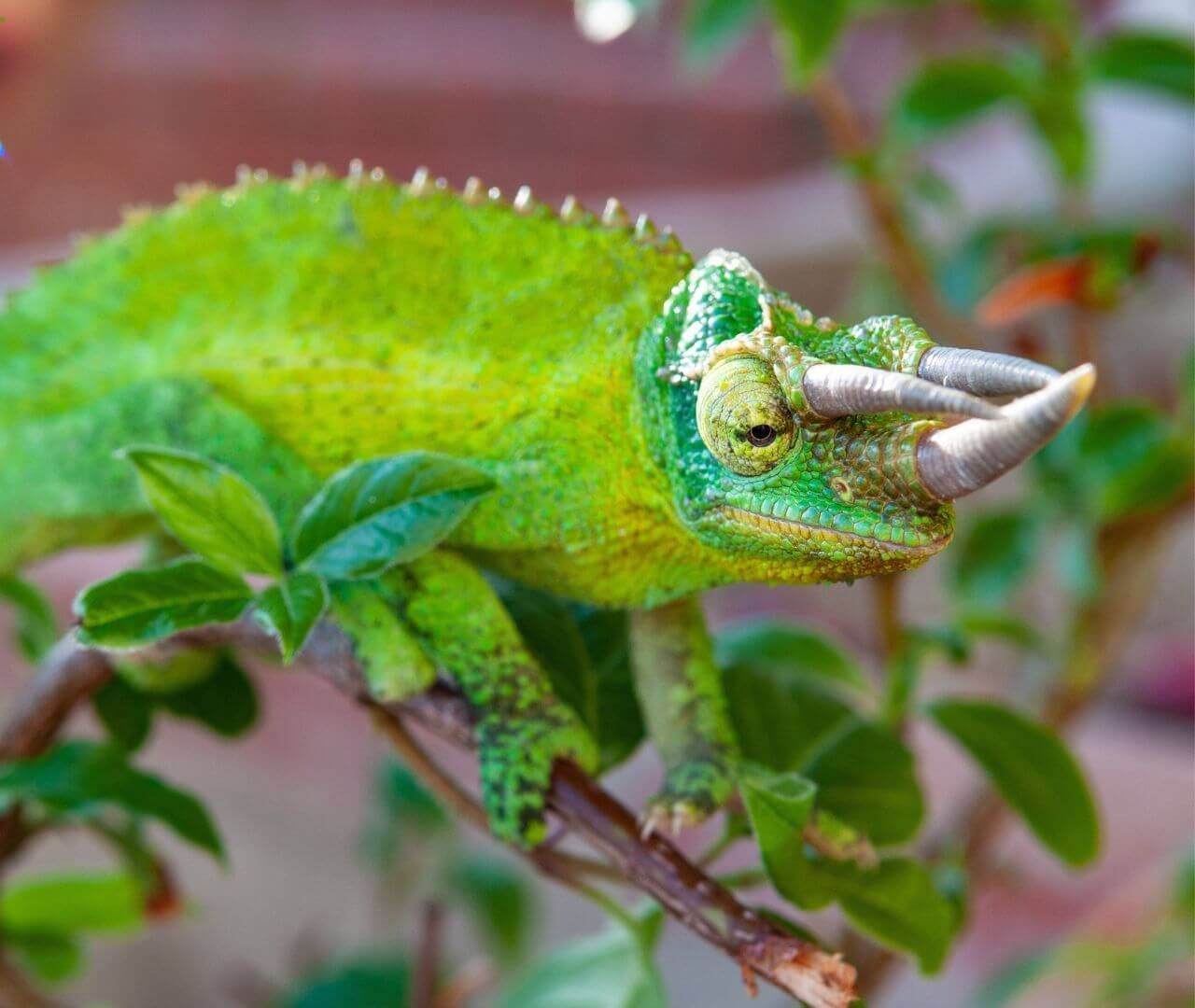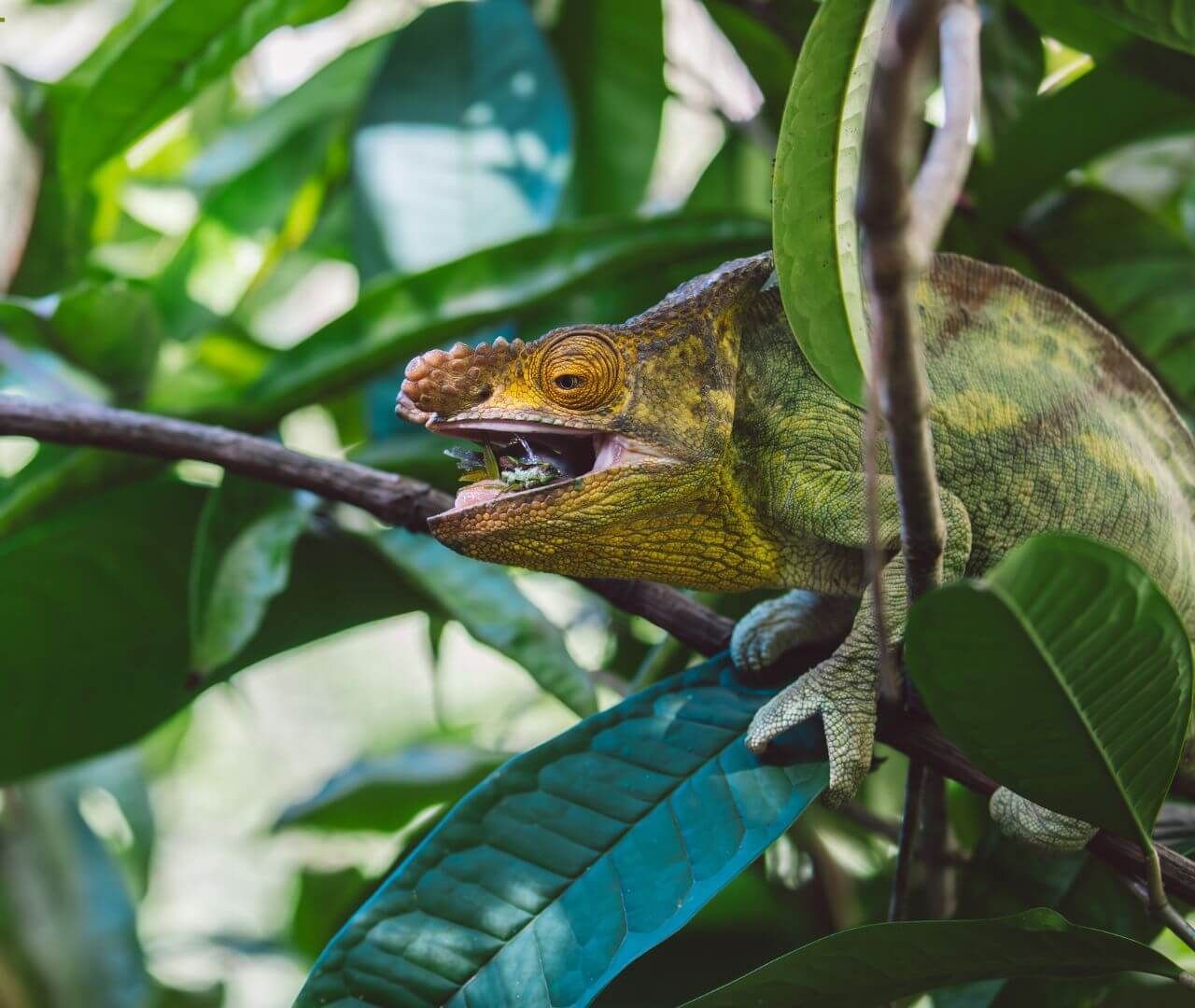Chameleons

Let's Learn About Chameleons
Word of the Week
Chromatophores
Insectivores are animals that mainly eat insects. Chameleons, anteaters, and some bats are insectivores.
Chameleons use their long, sticky tongue to catch insects like grasshoppers, crickets, and beetles.
Fast Facts
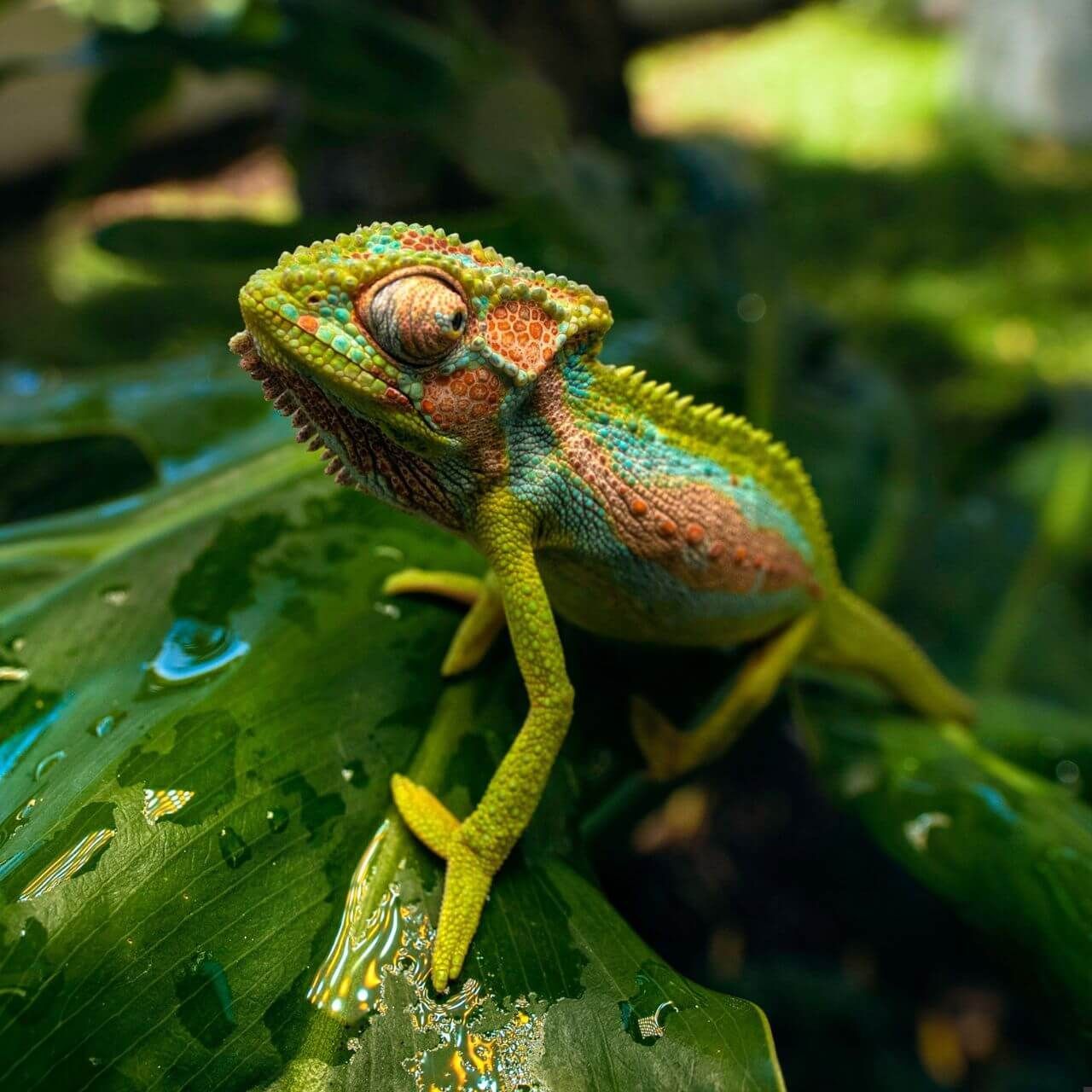
Where do chameleons live?
Chameleons live in Africa, Asia, and Europe. About half of all chameleons are endemic to the island of Madagascar.
Most chameleons live in tropical forests. Some chameleons live in savannas or woodlands, and a few even live in the desert.
What do chameleons eat?
Chameleons are carnivores, meaning they eat meat.
More specifically, most chameleons are insectivores. They mainly eat insects. Some larger species eat larger prey, like bird chicks and small lizards. Chameleons catch prey with a long, sticky tongue.
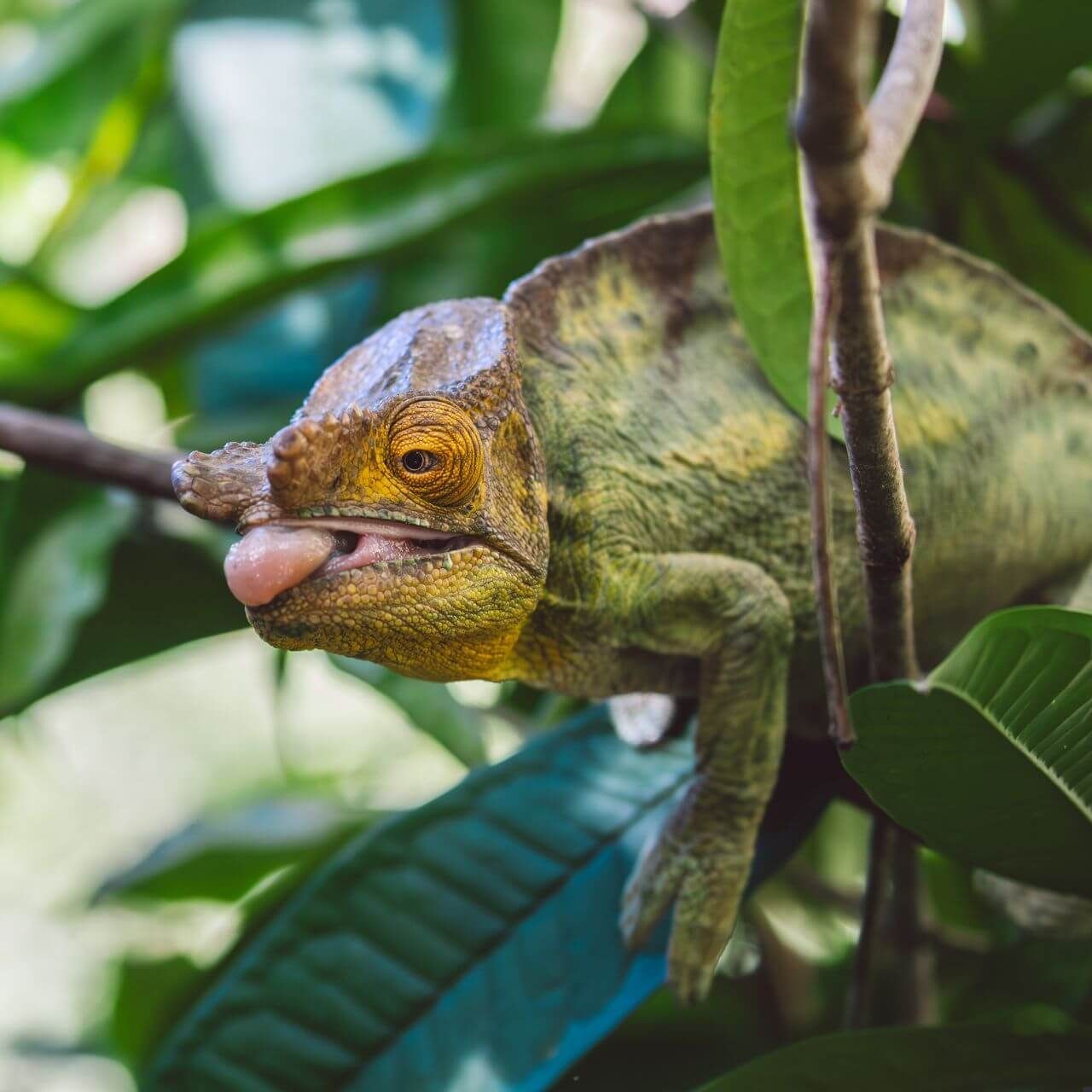
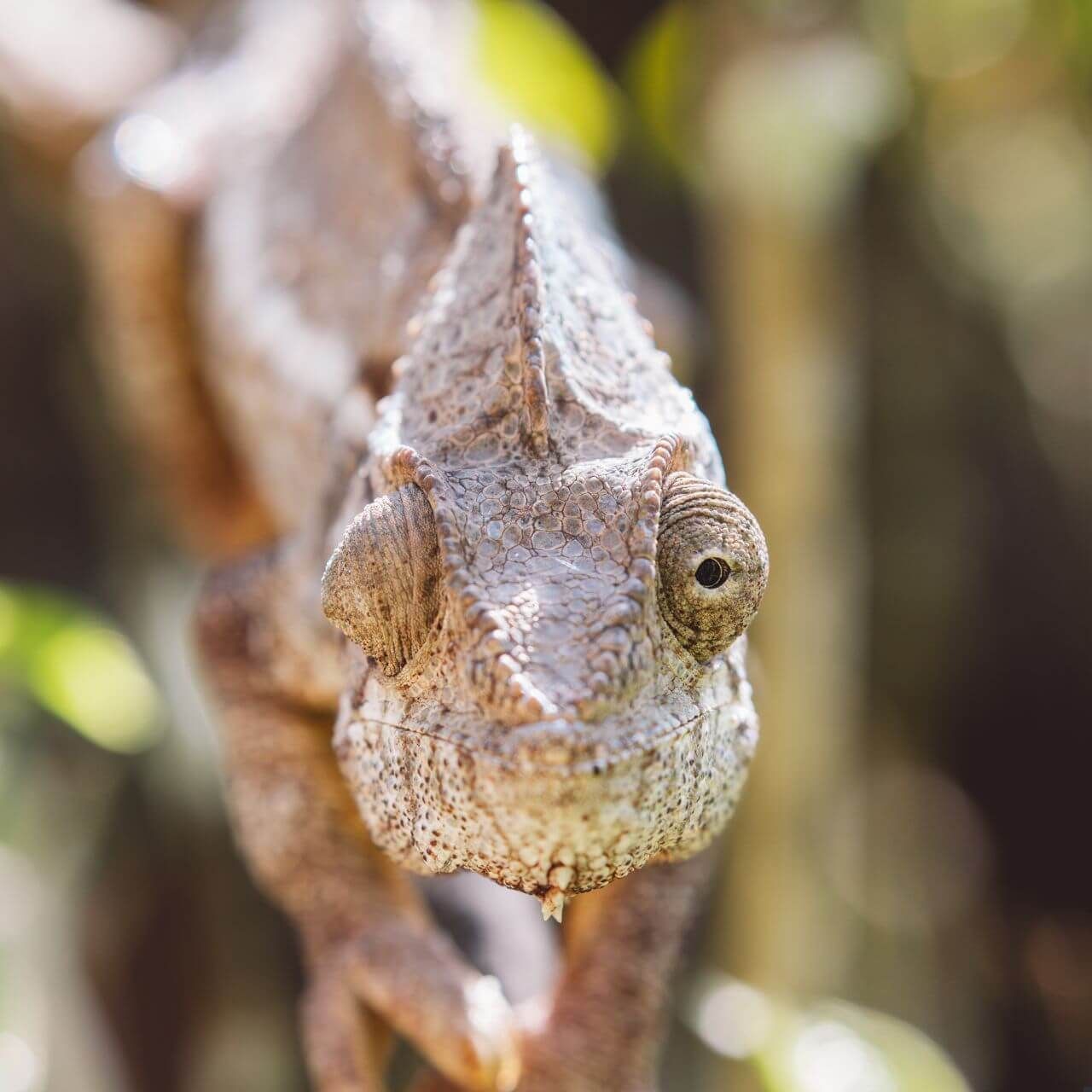
What traits do chameleons have?
Chameleons are a family of lizards with many traits in common, such as...
- Zygodactyl feet with strong grip.
- A prehensile tail.
- Eyes that move independently.
- A long, sticky tongue to catch prey.
- The ability to change color.
How many chameleons are there?
There are roughly 200 species of chameleons. However, scientists disagree about exactly how many exist.
Many species of chameleons are endangered. They face threats like habitat loss, mainly deforestation, and poaching.

Species Spotlight
Labord's Chameleon
Furcifer labordi
The Labord’s chameleon, a 5-inch-long, bright colored chameleon, holds an unusual world record. They have the shortest lifespan of any land vertebrate in the world. Some complete their life cycle in 4 to 5 months.
The Labord’s chameleon is endemic to the island of Madagascar, meaning it is only found there. As the rainy season starts each year, Labord’s chameleons begin emerging from the soil as they hatch from eggs. They move into the trees where they eat small insects. They grow quickly, reaching adult size in about 2 months.
Once they become adults, they begin their search for a mate. Male chameleons find females by following a trail of pheromones (communication chemicals/smells). Males impress females with bright colors and physical competitions with other males. The bigger, stronger male wins the fight and the opportunity to mate.
Females dig a hole after breeding where they deposit up to 11 eggs. Then, shortly after, the adults die. They only breed once during their lifetime. The eggs remain underground through the dry season and hatch when the rainy season begins again. In some areas during the dry season, the only Labord’s chameleons that exist are in eggs underground.
Labord’s chameleons are vulnerable to changes in the environment during this time. If the rainy season starts too early or too late, it is challenging for them to survive when they hatch. One of the best ways to protect the Labord’s chameleons (and many other species!) is to reduce your impact on climate change to keep climate patterns stable.
*These especially short lifespans occur in the more extreme parts of their range. Labord’s chameleons can live longer in rainier areas.*
Conservation Corner
Reforestation in Madagascar
Since the 1950s, a section of forest the size of West Virginia has been destroyed in Madagascar. Native people in Madagascar clear forests to create space to grow crops. They rely on crops for money to support their families. Unfortunately, this leaves forest animals, like chameleons, without food or shelter.
Thanks to the help of several conservation groups, the people of Madagascar are making a change. In recent years, conservation organizations began working with local people to plant trees in deforested areas. This process is called reforestation. As it turns out, reforestation benefits not only animals but also people.
One group, the Madagascar Biodiversity Partnership (MBP), has planted 5 million trees. This reforestation project is only possible because of donors and local people in Madagascar. More than 100 local people work full-time on reforestation. They are paid for their work by the MBP, giving them a way to make money other than growing and selling crops.
Another group, the Duke Lemur Center (DLC), is also working to restore Madagascar’s forests. They work with local universities to create “food forests.” They plant native trees mixed with fruit trees, which provides the fruit trees with shade and stability. The universities sell fruits from the food forest to make money. The DLC is also working with the Madagascar military to restore the forest on their base.
These organizations, along with several others, give hope to the animals that rely on Madagascar forests. They prove the success of community-based conservation by working with the local community to do what is best for both people and the planet.
Chameleon Conundrum
Fill in the blank for each sentence about chameleons.
Learn More!
Glossary
Adaptation
The process by which a species becomes more fit for its environment over the course of several generations. It is a result of natural selection.
Arboreal
Living in the trees.
Camouflage
The ability for an organism to blend into their surroundings usually to hide from prey or predators.
Carnivore
An animal that primarily eats meat.
Climate Change
A change in global weather patterns as a result of greenhouse gases in the atmosphere.
Endemic
Living in one place and nowhere else.
Ectotherm
An animal that relies on the outside temperature to regulate their body temperature (reptiles and amphibians). Also known as cold-blooded.
Habitat Loss
Occurs when habitats are destroyed and changed into human-managed land such as cropland, towns, or dams.
Hyoid Bone
A bone in the front of the neck that supports the tongue and contributes to vocalizations.
Insectivore
An animal that eats primarily insects.
Instinct
An inherited behavioral trait (a behavior that innate rather than learned).
Oviparous
To lay eggs.
Pheromone
A communication chemical used to signal information to members of the same species.
Poaching
The illegal hunting or collection of wild animals.
Predator
An animal that hunts other animals for food.
Prehensile
Having the ability to grasp.
Prey
An animal that is hunted and eaten by another animal.
Reptile
A group of ectothermic (cold-blooded) vertebrates that are covered in scales and generally lay eggs.
Species
A closely related group of animals with similar characteristics that are capable of reproducing (example: tigers).
Thermoregulation
The act of an animal controlling its body temperature.
Tropical
A region near the equator that has warm temperatures year round.
Zygodactyl
[In feet] Having two middle toes face forward and two outside tows face backward. Zygodactyl feet are good for gripping.

